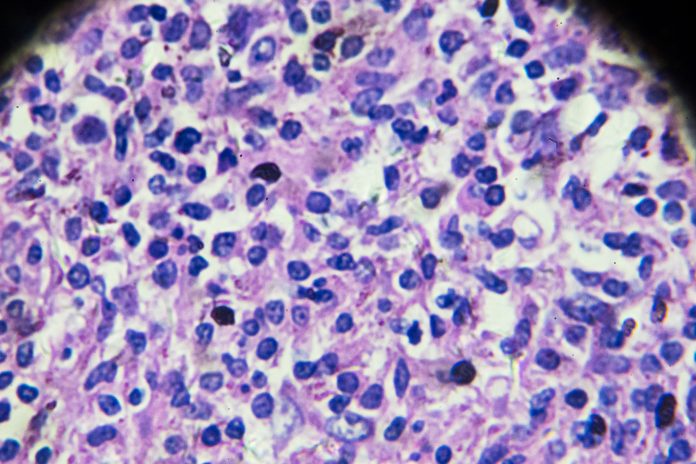
Long-time medicinal chemists Jay Parrish, PhD, and Gabriel Martinez, PhD, are trying to develop a broad class of new agents never seen before—drugs that control mitochondrial copy numbers to harness mitochondrial and, ultimately, cellular energetics.
“If you have a deficiency in the number of mitochondrial DNA (mtDNA) copies, you have cellular energetic issues, and there are diseases—rare diseases, neurodegenerative diseases, diseases of aging, etc.—that manifest in a deficiency of energy,” Parrish told Inside Precision Medicine.
For the past four-plus years, Parrish and Martinez, CEO and CSO of Pretzel Therapeutics, have been working on ways to modulate mtDNA. Now, they’ve published a study in Nature unveiling the discovery of novel small-molecule activators for DNA polymerase gamma (POLγ) for the treatment of conditions related to mtDNA depletion. Encoded by the POLG gene, POLγ is the sole DNA polymerase in human mitochondria; it is essential for mtDNA replication and repair, and mutations in the POLG gene can cause various mitochondrial diseases.

Parrish said, “mtDNA depletion syndromes are a devastating group of disorders where you have a low copy number, and we’ll be able to hopefully fix that with our small molecule drug. It’s the first disclosure of our mechanism where we’re turning up mtDNA with a small molecule to POLγ for making more mtDNA copies.”
The compound described in the research article, PZL-A, corrects the function of mutant POLγ forms in vitro and boosts mtDNA production in cells from young patients with severe mitochondrial DNA depletion syndromes (MDDS), improving the genesis of the organelle essential for energy production and cellular respiration.
“We can get the mutated POLγ to pretty much work close to wild-type levels, and that translates into an improvement in oxidative phosphorylation (OXPHOS) function, more ATP, etc.,” Martinez told Inside Precision Medicine. “We have biochemical evidence—how the molecule binds and behaves—of what [PZL-A] is doing to [POLγ]. We have patient fibroblast data and make neural stem cells to study and introduce mutations, and we can rescue both cell types.”
This publication comes on the heels of the announcement of the first patient dosed with Pretzel Therapeutics’ PX578, providing insight into the mechanism of action for the first-in-class approach to targeting POLγ with disease-modifying potential across MDDS and broader neurodegenerative diseases.
Small (molecule) but mighty
Pretzel Therapeutics is not the first company to try to develop therapeutics for diseases driven by mtDNA irregularities. However, Pretzel Therapeutics’ approach to modulating mtDNA copy numbers through polymerases stands alone.
The startup Luciole Pharmaceuticals is focused on discovering and developing small molecule activators of OGG1, an enzyme that accelerates the repair of oxidative damage to mtDNA and thereby addresses mitochondrial dysfunction, oxidative stress, and inflammation associated with age-related diseases. Minovia Therapeutics, a clinical-stage company, uses mitochondrial augmentation therapy (MAT), which transfers healthy mitochondria from donor cells to patient cells to replenish functional mitochondria and target diseases like Pearson syndrome and Kearns-Sayre syndrome.
Besides being experts in small molecules, Pretzel Therapeutics opted out of using gene therapy or editing for several reasons related to the etiology of MDDS and cost. “Gene editing is challenging because you need delivery, but you can’t get nucleic acids into mitochondria—you have to edit the nucleus or use something like zinc finger nucleases,” said Parrish. “With small molecules, we don’t need to worry about that.”

Martinez added that MDDS are not necessarily tissue specific—the pathology tends to be body-wide, manifesting as tissues of high energetic demand, such as muscle, brain, heart, and liver. “A small molecule compared to gene editing platforms or oligo platforms is still the most general platform if you want to reach the maximum amount of tissues,” said Martinez. “Mitochondrial diseases require partition across many different tissues. For example, muscle delivery is not great with many other technologies. So, small molecules are an excellent fit for MDDS.”
A gene-editing approach comparable to the mutation-agnostic small molecule POLγ activations developed by Pretzel Therapeutics would require gene replacement, swapping out the entire POLG gene that spans a 21-kb stretch. “There are so many mutations, so unless you find a way to replace the gene everywhere, it’s going to be really difficult to address the POLγ patients,” said Parrish. “Small molecules, in this case with this mechanism, offer several advantages, including a mutant-agnostic approach and the ability to partition. So, this is a key technology for patients with similar conditions.”
That said, Pretzel Therapeutics is also looking at using nucleic acids, with several programs using modalities like antisense oligonucleotides (ASOs) and developing a gene editing platform for targeting mtDNA. However, the small molecule programs will lead the Pretzel Therapeutics clinical charge. “At the end of the day, a small molecule is a great vehicle to change the lives of patients because it’s cheap, and you can get it around the world,” said Parrish. “But right now, the small molecule is the first step in this long journey we hope to embark on.”
Regarding clinical indications, Pretzel Therapeutics is first investigating rare genetic diseases before moving on to more complex conditions related to the nervous system and aging, such as Parkinson’s disease and muscle wasting.
Mutation agnostic sweet spot
In the Nature study, co-senior authors Simon Giroux of Pretzel Therapeutics and two University of Gothenburg researchers, Claes M. Gustafsson and Maria Falkenberg, report the findings from screening 270,000 compounds which led to PZL-A, a compound that robustly stimulates both wild-type POLγ and several disease-associated variants.
PZL-A enhances enzymatic efficiency by increasing the rate of nucleotide incorporation without impairing the proofreading functions essential for mtDNA accuracy. Cryo-electron microscopy revealed that PZL-A binds at a hydrophobic pocket between the POLγA and POLγB subunits, stabilizing their interaction during DNA synthesis. This unique binding mechanism allows PZL-A to improve POLγ processivity, producing longer DNA strands akin to wild-type activity.
Of PZL-A, Parrish said, “This molecule can correct the function of the POLγ protein, which is in a way pretty. Molecules don’t usually fix proteins. They do other things like inhibiting and blocking, but fixing proteins rarely, just the cystic fibrosis program of Vertex and probably nothing else out there.”
In patient-derived fibroblasts with POLG mutations, PZL-A significantly accelerated mtDNA repopulation after depletion, restoring mtDNA levels even under conditions of limited nucleotide availability. The compound also enhanced mitochondrial gene expression, oxygen consumption rates, and ATP production, demonstrating its potential to reverse bioenergetic deficiencies. Beyond fibroblasts, PZL-A improved mtDNA levels and oxidative phosphorylation in neural stem cells carrying severe POLG mutations, highlighting its relevance for neurological disorders. Its ability to act directly within mitochondria underscores its promise as a versatile therapeutic agent.
Running on mtDNA
PZL-A, however, is not meant to be a clinical compound—it is a “tool” compound intended for research use. Of PZL-A and PX578, Parrish said, “They’re very similar structurally, just slight differences here and there. PZL-A is very drug-like and has all the great properties similar to PX578. The clinical candidate PX578 has been optimized for humans. PX578 is oral once a day, CNS penetrant—everything you’d want a small molecule to be for this patient set.”
While PZL-A won’t be used in the clinic, Pretzel Therapeutics intends to use the tool to continue to deepen its understanding of mitochondrial biology and to make the leap to more complex conditions. “The world needs good science on mitochondria,” said Parrish. “What’s next for us to be able to access aging and neurodegeneration is to start addressing the pharmacology on POLγ wild type. The next installment we are preparing and drafting will be about how these mechanisms of action can be applied to the POLγ wild-type system, what that means, and what it looks like in the depletion syndromes. So far, we’ve had very good outcomes in all the studies that we’ve done. Stay tuned for paper number two, which will come in the following months.”
Parrish and Martinez make the case for Pretzel having a strong plan for building a translational story in neurodegenerative diseases and diseases of aging and have also identified other pathways and molecular targets that are modulators of cellular energetics for other drug development programs. For example, Martinez said, “The other part of the bioenergetics piece is that we can switch the energy source from ATP to fatty acid burning, and we think that has a significant benefit for obesity.”
Pretzel Therapeutics has also identified other pathways and molecular targets that modulate cellular energetics for other drug development programs. For example, Martinez said, “The other part of the bioenergetics piece is that we can switch the energy source from ATP to fatty acid burning, and we think that has a significant benefit for obesity.”
While excited, Parrish and Martinez recognize that this is just the very beginning of what hopefully will be a fruitful whitespace. “We’re trying to be very data-driven about it and take one step at a time and not shout to the rafters that we think we can cure aging, but we may get there in 10 or 20 years from now,” said Parrish. “This is a really interesting entry into maybe a new world, a new way of modulating mitochondria and aging, etc. There’s a lot of potential, but a long way to go.”









![Best Weight Loss Supplements [2022-23] New Reports!](https://technologytangle.com/wp-content/uploads/2022/12/p1-1170962-1670840878.png)




